Tesla Coil

With its giant arcing sparks and unnerving noise, Griffith Observatory’s Tesla coil is one of its most memorable and iconic exhibits. Millions have seen it in operation, throwing its lightning-like discharges to the walls of its alcove. Now restored and moved to a new alcove designed to minimize its external electrical disruptions, the Tesla coil is ready to thrill new generations of visitors.
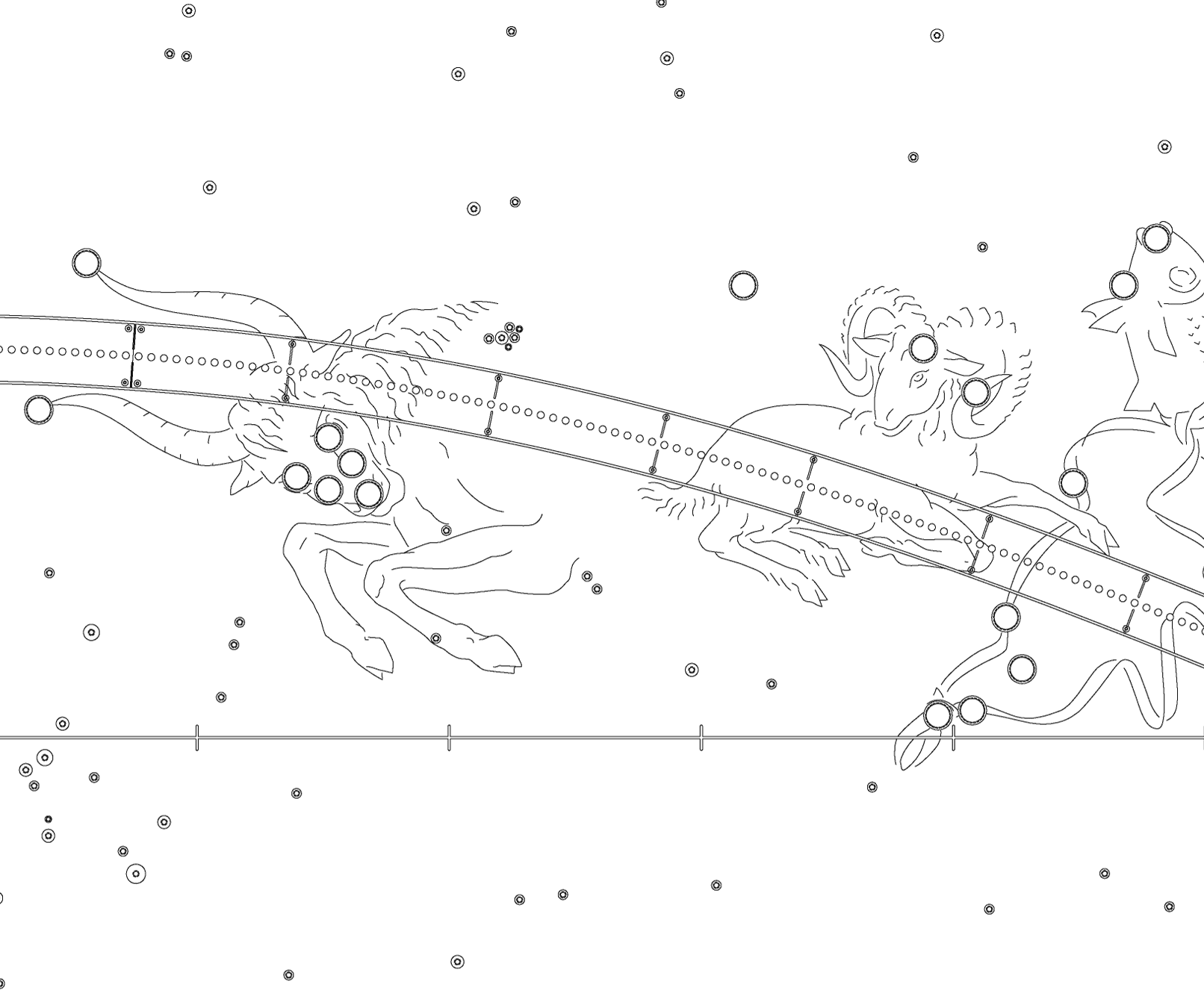
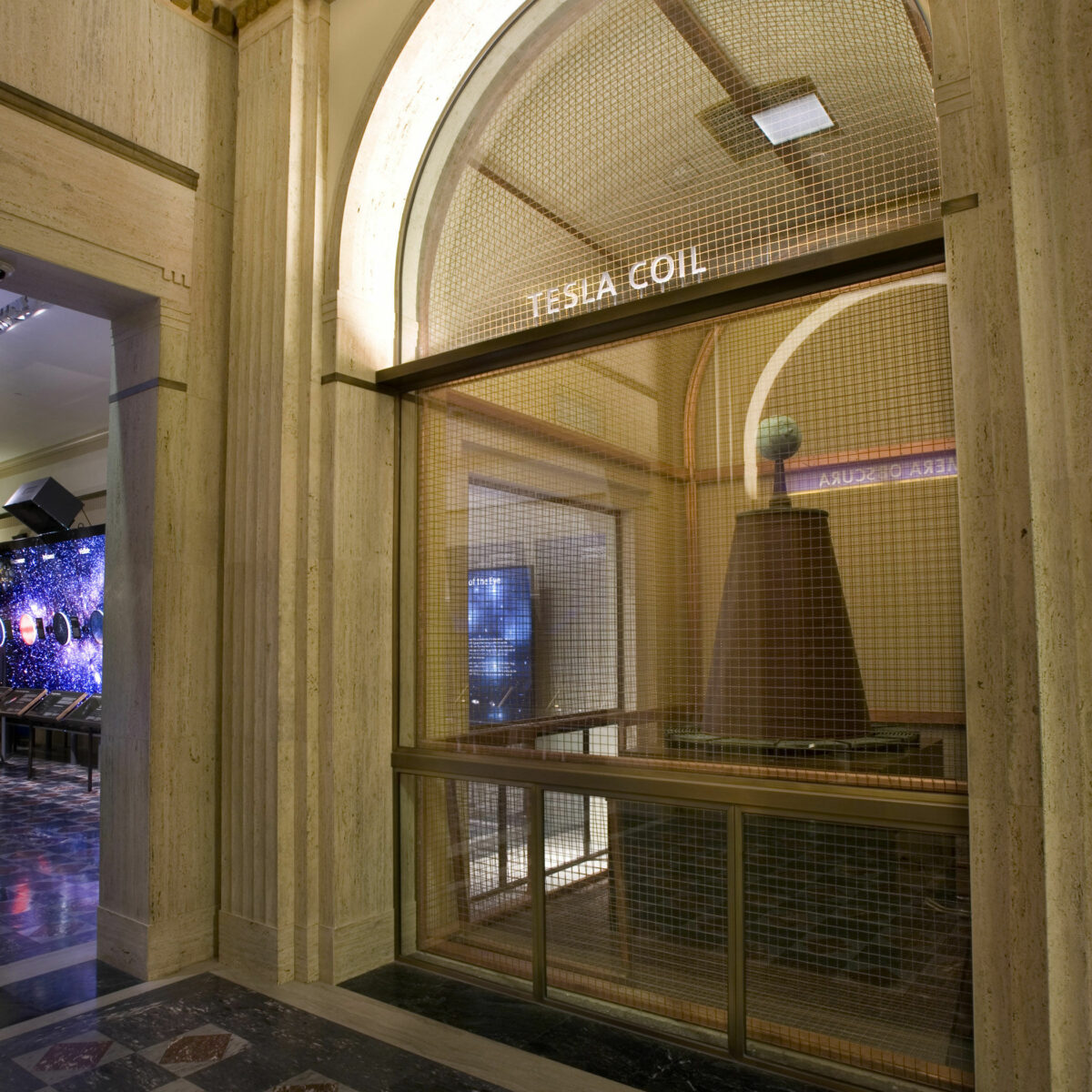
Tesla Coil Demonstration
Observatory staff demonstrates the Tesla Coil several times each day we are open. The six-minute presentation is free. The Tesla Coil is located in the Wilder Hall of the Eye.
Show Length: 6 min.
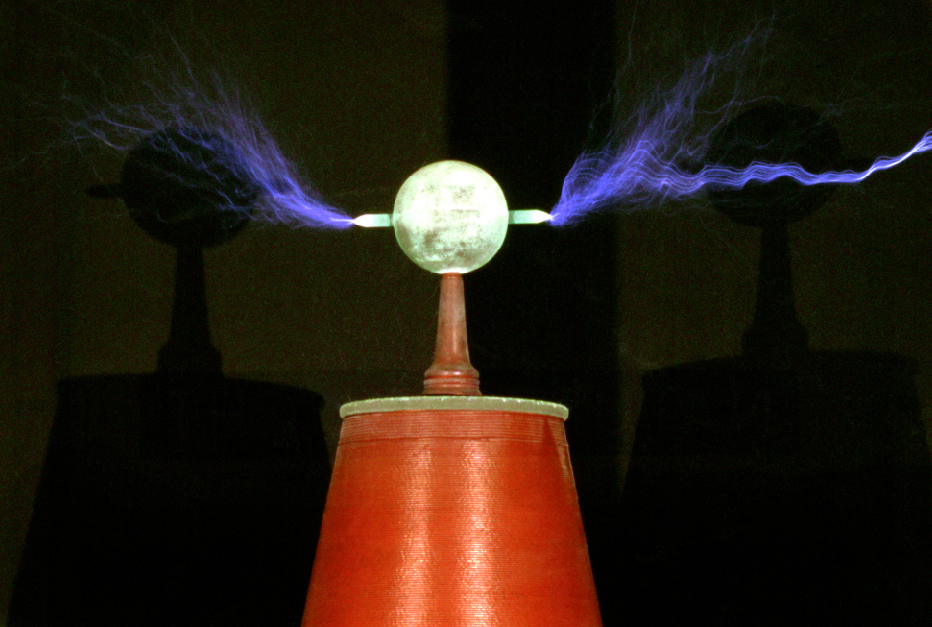
A Tesla coil converts low-voltage alternating current electricity to very high voltage and increases the frequency. It is named after its inventor, eccentric genius Nikola Tesla (1856-1943), who displayed his first model in 1891. The main aim of the Tesla coil was transmission of electricity through the air, part of a great dream to provide electricity without using wires.
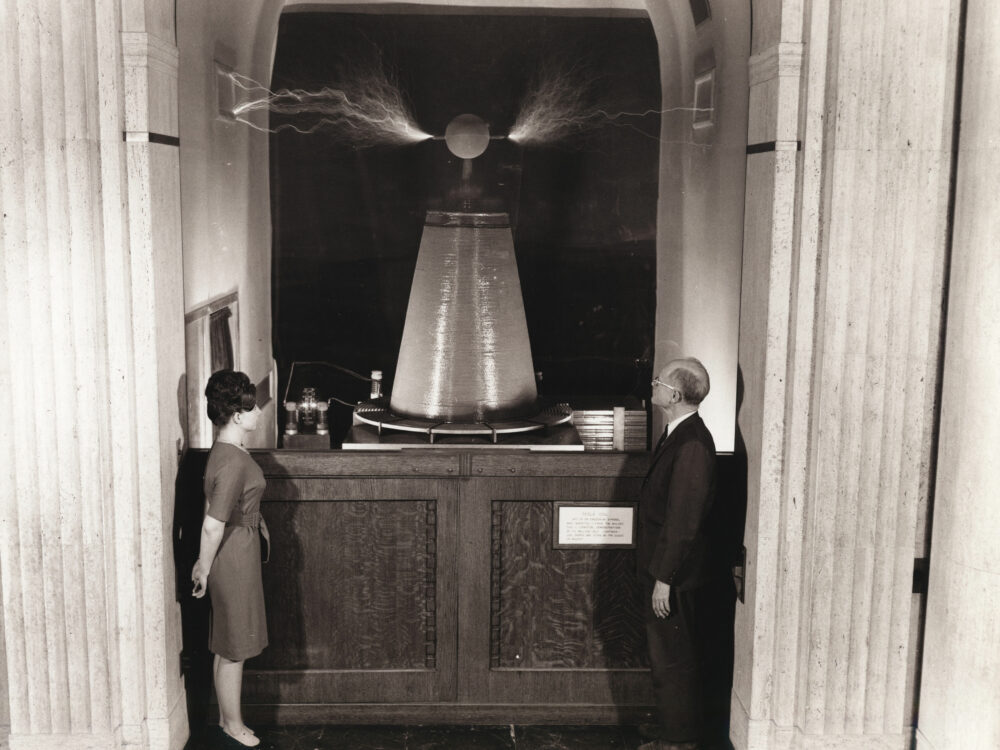
Tesla coils have a long and colorful history in science and technology sideshows. Before the Griffith Observatory Tesla coil went on display in 1937, it belonged to Dr. Frederick Finch Strong. He was a physician and instructor at Tufts University in Massachusetts. Dr. Strong used electricity in the healing process and relied heavily on Tesla coils as part of his work. Eventually, he donated the major components of this instrument to the City of Los Angeles.
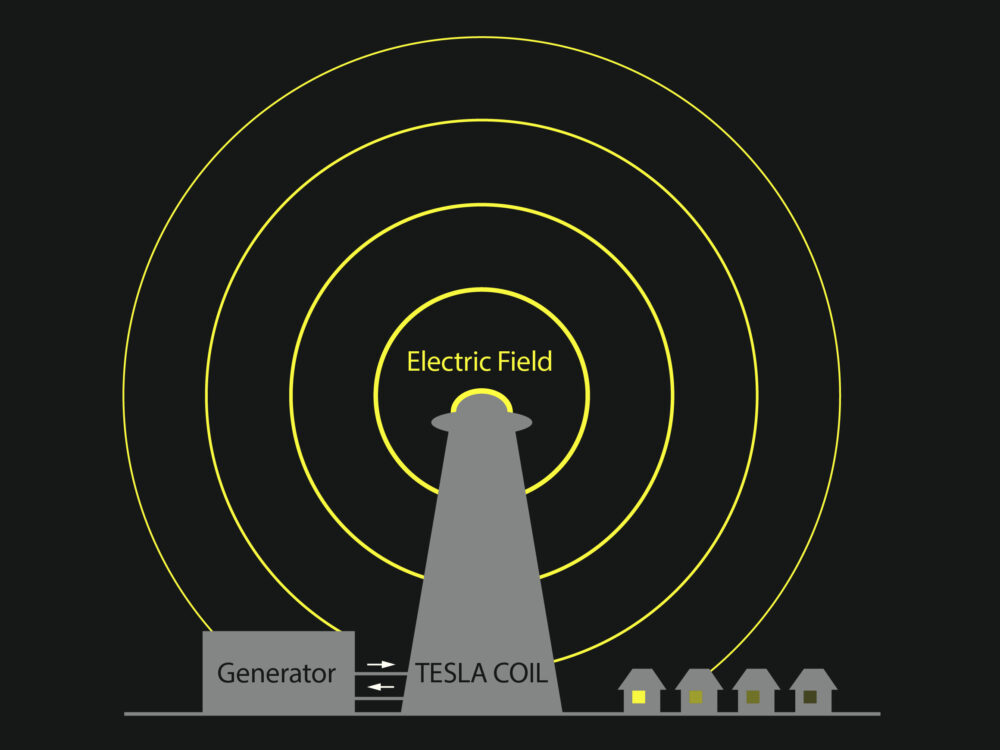
Electricity Without Wires
Tesla coils are part of a great dream to provide electricity without using wires. Electricity became widely available around 1900, when the first networks began to send power to homes and businesses over transmission lines. They were expensive to build, and so Tesla and others worked on wireless electrical networks. The technology was difficult to implement, and it never got out of the laboratory.
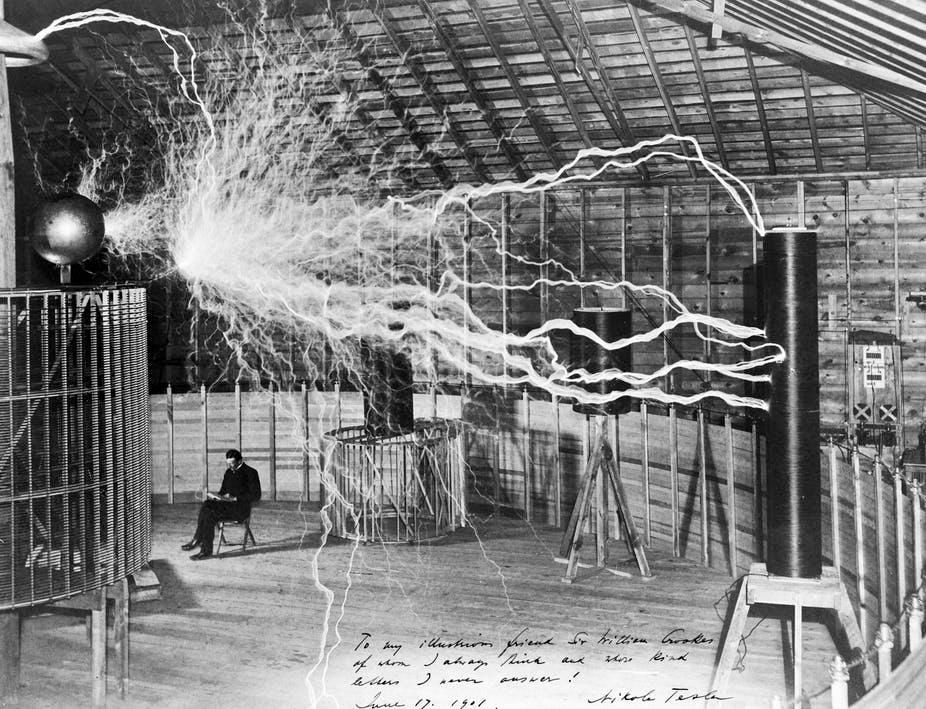
Tesla's Legacy
Nikola Tesla (1856–1943) invented the Tesla coil. He conducted many experiments in his lab on the generation and distribution of alternating current electricity. The Westinghouse company used Tesla’s designs for generators and distribution systems to build a power station at Niagara Falls. The power grid that we use to bring electricity to our homes is based on Tesla’s work.